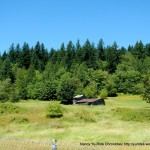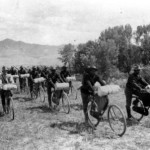 |
| Pedbikeimages.org/Dan Burden |
Last year, Washington Bikes championed a bill that would give cities and towns the discretion to set speed limits to 20 miles per hour on non-arterial streets. The bill passed 92-0 in the House but ran out of time in the Senate Transportation Committee. We are leading the charge again in 2012 for SHB 1217, the Neighborhood Safe Speeds Bill.
There are many benefits to passing the Neighborhood Safe Speeds Bill. It allows local governments to determine safe speeds for local streets, and it removes the additional costs and red tape currently required by the state. Reduced speeds improve neighborhood safety and save lives. Making neighborhood streets safer can encourage physical activity and active transportation, resulting in a healthier society.
The desire to slow down our communities is not unique to Washington. In Idaho, local jurisdictions have the capacity to set lower speed limits on portions of state highways that pass through residential, urban or business districts to enhance safety. New York City established its first “neighborhood slow zone” earlier this year. 20’s Plenty for Us is the British movement that has successfully campaigned to lower residential speed limits in cities and towns.
Writer Will Doig took an in-depth look at the resurging popularity of slower streets in a Salon article published last week. In his article, Doig observed:
Now, gradually, the pendulum appears to be swinging back toward slower streets, partly because walkable neighborhoods and urban density are in vogue again. A lazy streetcar, a strolling pedestrian or a languidly pedaling bicyclist are all signs that neighborhood life in that area is healthy and abundant. They indicate that you’re somewhere that’s packed with businesses, parks, playgrounds — things that people want to stop and use — and, in circular fashion, they encourage even more of that stuff to be built.



